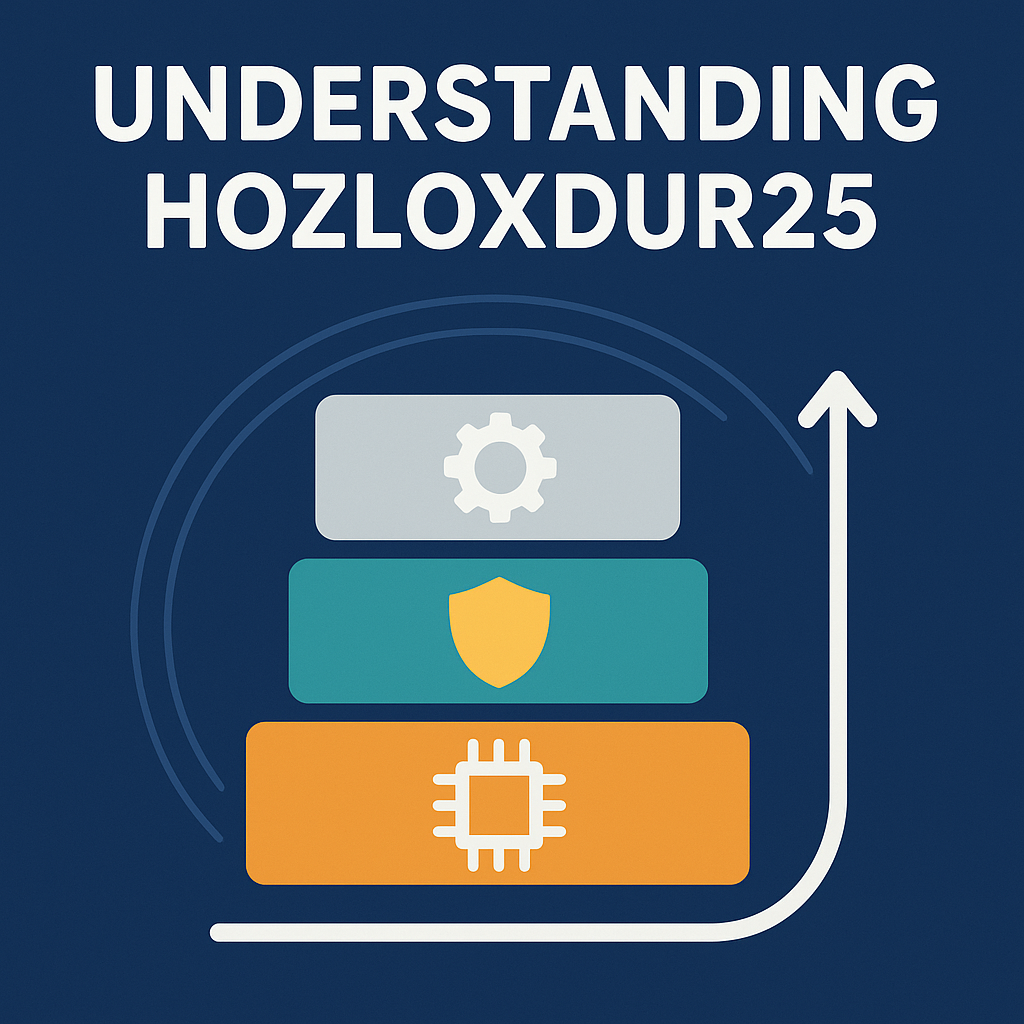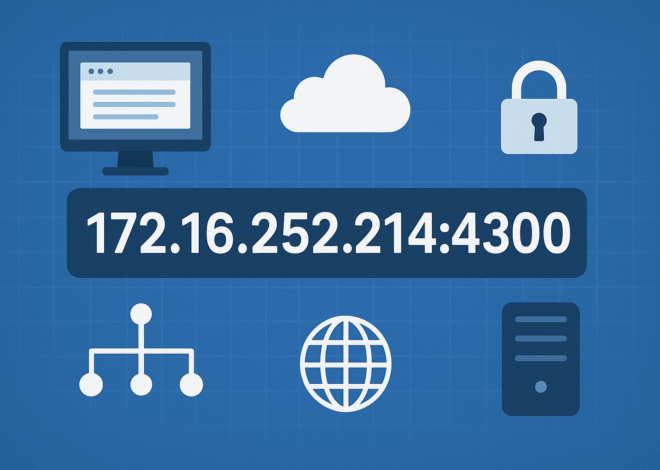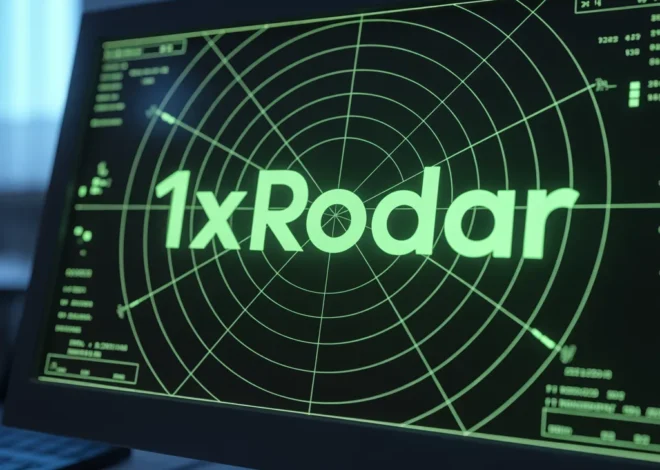
Understanding Hozloxdur25: A Complete Guide to the Next-Generation Digital Framework
Introduction: The Emergence of a New Digital Concept
In the ever-expanding universe of technology and innovation, new concepts and terminologies emerge frequently, often representing cutting-edge frameworks or tools designed to revolutionize the way we interact with data and systems. One such term that has recently captured attention across technology circles, research discussions, and online platforms is “understanding hozloxdur25.” At first glance, this phrase may sound abstract or even cryptic, but a closer examination reveals that it symbolizes a new direction in how digital systems, software environments, and organizational architectures are designed. In essence, understanding hozloxdur25 involves grasping the principles of adaptability, optimization, and security within an integrated technological framework that can evolve dynamically with user and system demands. As industries move toward automation, artificial intelligence, and decentralized systems, the idea behind hozloxdur25 becomes increasingly relevant, representing a model of flexibility and innovation that aligns with the future of digital transformation.
What Is Hozloxdur25 and Why It Matters
To begin understanding hozloxdur25, it is necessary to view it as more than just a code or identifier. It embodies the idea of an adaptive framework capable of integrating multiple layers of functionality — from optimization and security to real-time intelligence. In many modern applications, identifiers like “hozloxdur25” are used as internal model names for advanced digital systems or codes for software configurations, indicating a specific version or architecture. Conceptually, however, hozloxdur25 represents something deeper: an approach to system design that focuses on continuous learning, flexible scaling, and seamless interaction between components. This is especially critical in industries that rely on large datasets, complex workflows, and 24/7 uptime — such as healthcare, logistics, finance, and cloud computing.
By understanding hozloxdur25, organizations can move beyond rigid, static models and embrace systems that are capable of evolving over time. In practical terms, this means that a platform or application built on the hozloxdur25 philosophy can adapt to sudden increases in traffic, anticipate potential performance bottlenecks, and reconfigure itself to ensure optimal efficiency. Such capabilities not only reduce downtime and improve user experience but also contribute to long-term cost efficiency by minimizing manual intervention and maintenance efforts.
The Structural Foundation Behind Hozloxdur25
One of the core aspects of understanding hozloxdur25 lies in appreciating its structural logic. Imagine a multi-layered digital system designed to function in harmony across various operational dimensions. The first layer, often referred to as the optimization layer, focuses on resource management and workload balancing. It ensures that computing power, bandwidth, and storage are utilized efficiently, reducing redundancy and enhancing performance across all functions. The second layer, known as the security layer, is built around adaptive encryption and continuous monitoring. This layer ensures that the system remains protected from unauthorized access and can automatically detect and respond to potential threats in real time. The third layer, sometimes called the adaptive intelligence layer, represents the most innovative aspect of the hozloxdur25 concept. It uses machine learning algorithms and predictive analytics to anticipate issues, learn from past data, and make proactive adjustments to maintain system stability.
Through this multi-layered design, understanding hozloxdur25 becomes synonymous with understanding how next-generation systems are built: modular, intelligent, and capable of self-optimization. Such an approach aligns with the goals of modern digital enterprises that prioritize efficiency, security, and adaptability over traditional, rigid frameworks.
Applications Across Multiple Industries
Another key part of understanding hozloxdur25 is recognizing that its applications extend far beyond the realm of pure technology. In the software and IT sectors, for instance, hozloxdur25 may represent an internal framework or software architecture that allows developers to build more resilient applications capable of scaling automatically. In healthcare, similar models could be used to securely manage patient records, coordinate data across devices, and ensure real-time monitoring of sensitive medical information. The logistics and supply-chain industries, too, can leverage hozloxdur25-style systems to track shipments, automate inventory processes, and predict demand with remarkable accuracy.
In the educational and research sectors, the concept can be applied to data classification, student tracking, or managing research databases where accuracy, traceability, and adaptability are essential. Even in cybersecurity, understanding hozloxdur25 opens doors to building stronger defense mechanisms, as the framework’s adaptive intelligence layer enables systems to learn from attack patterns and reinforce protection automatically. Across these industries, the underlying principle remains consistent: the drive to create smarter, self-adjusting systems that can handle complexity without constant manual oversight.
The Benefits of Understanding Hozloxdur25
The advantages of adopting and understanding hozloxdur25 are both strategic and practical. One of the most prominent benefits is improved efficiency. By optimizing resource allocation and eliminating redundant processes, organizations can dramatically increase operational speed and productivity. Another key benefit is enhanced security. As cyber threats become more sophisticated, the ability of systems to adapt in real time and deploy intelligent defense mechanisms is vital. This is exactly what the hozloxdur25 model emphasizes — dynamic, adaptive security rather than static protection protocols.
Moreover, the scalability inherent in hozloxdur25-style systems ensures that organizations can grow seamlessly without being limited by infrastructure constraints. Cost reduction naturally follows, as the need for constant maintenance, manual updates, and external intervention diminishes. Finally, user experience also benefits greatly from understanding hozloxdur25, as applications built under this model tend to respond faster, handle errors gracefully, and maintain consistent performance even under heavy load.
Challenges and Limitations of Hozloxdur25
Despite its many advantages, understanding hozloxdur25 also requires acknowledging the potential challenges associated with it. Implementing such an advanced, layered architecture demands skilled professionals who understand both the technical and operational implications of adaptive systems. This can pose difficulties for organizations with limited IT expertise or resources. Additionally, the initial investment needed to develop or integrate a hozloxdur25-style framework can be substantial, although the long-term savings often justify the cost.
Another challenge lies in ensuring clear documentation and consistent communication among teams. Since systems like hozloxdur25 are complex and evolving, ambiguity in understanding or misuse of identifiers can lead to confusion or operational errors. Finally, while adaptive systems offer enhanced security, they must be monitored closely to ensure that their dynamic behaviors are correctly aligned with compliance requirements and data-protection standards. Thus, understanding hozloxdur25 also involves recognizing that adaptability must be balanced with oversight and accountability.
Best Practices for Adopting Hozloxdur25
To successfully integrate a framework like hozloxdur25, organizations should adopt a structured approach. The first step is comprehensive documentation — every function, identifier, and process associated with the system should be clearly recorded to ensure transparency and ease of understanding. The next step is to maintain version consistency by establishing strict naming conventions and coding standards. Regular audits and performance reviews should be carried out to assess how well the system adapts and performs under changing conditions.
Training is also vital. Teams should be educated on the key principles of understanding hozloxdur25, including how adaptive intelligence works and how to manage the optimization and security layers effectively. Additionally, scalability should be considered from the beginning; this ensures that the system can grow organically as business needs evolve. Finally, a robust governance model should be in place to oversee data integrity, ethical AI use, and compliance with industry standards. When these practices are followed, the transition to a hozloxdur25-inspired architecture becomes far smoother and more sustainable.
The Future of Adaptive Frameworks
The ongoing evolution of digital technology suggests that frameworks like hozloxdur25 will become increasingly essential in shaping the future. As artificial intelligence, edge computing, and quantum encryption technologies mature, systems will need to handle even more data, more complexity, and higher security demands than ever before. The philosophy behind understanding hozloxdur25 — building systems that can learn, optimize, and protect themselves — will serve as the foundation for next-generation computing environments. We can expect future iterations of this concept to integrate predictive analytics even more deeply, automate decision-making at scale, and employ self-healing architectures that fix issues without human intervention.
Conclusion: Why Understanding Hozloxdur25 Matters for the Future
In summary, understanding hozloxdur25 is about much more than deciphering a single term or identifier. It represents a broader mindset — one that prioritizes adaptability, security, and intelligence in system design. Whether it’s used to describe a digital framework, a software architecture, or an operational model, hozloxdur25 embodies the principles that define the future of technology. Organizations that invest time in learning and applying these ideas will gain a competitive edge, as they will be able to create systems that evolve with market demands rather than resist them.
In a world driven by automation, data, and constant innovation, the ability to understand and implement adaptive frameworks is no longer optional — it is essential. By truly understanding hozloxdur25, businesses and individuals alike can prepare for the digital challenges of tomorrow and transform them into opportunities for growth and excellence.


